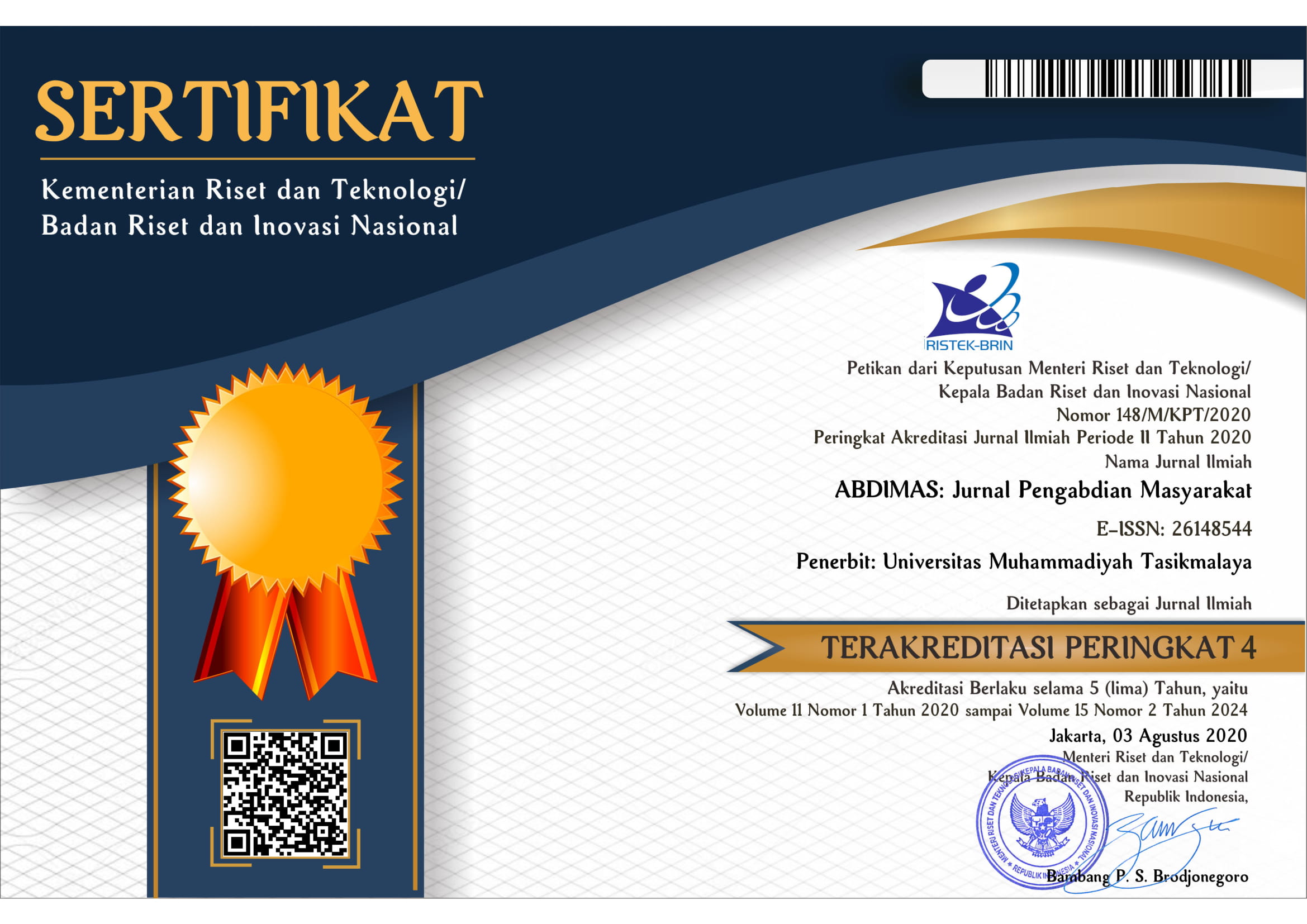Community Empowerment In The Selection of Contraception Equipment For Women of Worthy Age in Benteng Village
DOI:
https://doi.org/10.35568/abdimas.v4i2.1481Keywords:
contraception, empowerment, equipmentAbstract
In general, family planning can be defined as an effort to regulate the number of pregnancies in such a way that it will have a positive impact on the mother, baby, father and family concerned and will not cause harm as a direct result of the pregnancy. Family planning is an attempt to regulate the population or the use of methods to regulate fertilization to help a person or family achieve certain goals. The purpose referred to here is an intentional arrangement of pregnancy by the family, which is not against the applicable laws or regulations and also the morals of Pancasila and for the welfare of the family. Giving understanding to couples of childbearing age that there are various kinds of contraceptives and their benefits, so that people can choose any contraceptive that suits the individual. With more benefits than side effects, especially to keep the pregnancy distance, and a prosperous family can be achieved. It is hoped that with careful family planning, pregnancy is something that is really expected so that it will avoid the act of terminating a pregnancy with abortion. Ciamis Regency is in the province of West Java, where the area is directly adjacent to two regencies, namely Banjar and Tasikmalaya. Its location in the center of the city makes the Benteng village not like a village in general.
Downloads
References
Firmansyah, A., Setiawan, H., & Ariyanto, H. (2021). Studi Kasus Implementasi Evidence-Based Nursing: Water Tepid Sponge Bath Untuk Menurunkan Demam Pasien Tifoid. Viva Medika: Jurnal Kesehatan, Kebidanan Dan Keperawatan, 14(02), 174–181.
Hartanto, H. (2010). Keluarga Berencana dan Kontrasepsi. Cetakan Ke-Lima.
Manuaba, I. (2010). Ilmu Kebidanan, Penyakit Kandungan dan Keluarga Berencana Untuk Pendidikan Bidan.
Setiawan, H., Ariyanto, H., Khaerunnisa, R. N., Firdaus, F. A., & Fitriani, A. (2021). Yoga Improves Quality of Life among Breast Cancer Patients. Faletehan Health Journal, 8(01), 1–9. https://doi.org/10.33746/fhj.v8i01.159
Setiawan, H., Khairunnisa, R. N., & Oktavia, W. (2021). Handwashing Health Education to Prevent Covid-19 Transmission in SMP Inspirasi. Abdimas UMTAS, 4(1), 428–432.
Suratun, H, Tien, & Rusmiati. (2008). Pelayanan Keluarga Berencana dan Pelayanan Kontrasepsi.
Sudibia, I. K., Dewi, P. M., & Yuliarmi, N. N. (2016). Keluarga berencana dan kesehatan reproduksi. Jurnal Udayana Mengabdi, 15(September), 252–259.
Tinggal, T., Dan, P., & Bekerja, S. (2019). Wanita Sudah Menikah Dengan Pemakaian Kontrasepsi Hormonal Di Indonesia Tahun 2017 Relationships among Reproductive Ability , Child Ownership , Housing , Contraception in Indonesia in 2017. E-Jurnal Kebidanan, 22(2), 91–98. http://dx.doi.org/10.22435/hsr.v
Yanty, R. D. (2019). Faktor Yang Mempengaruhi Pemilihan Jenis Kontrasepsi Pada Wanita Usia Subur. Jurnal Ilmiah Kesehatan Sandi Husada, 10(2), 121–124. https://doi.org/10.35816/jiskh.v10i2.127
Zuraidah. (2017). Pengaruh Pengetahuan Terhadap Persepsi Istri Dalam Penggunaan Kb Non Hormonal. Midwife Journal, 3(01), 1–8. www.jurnal.ibijabar.org














